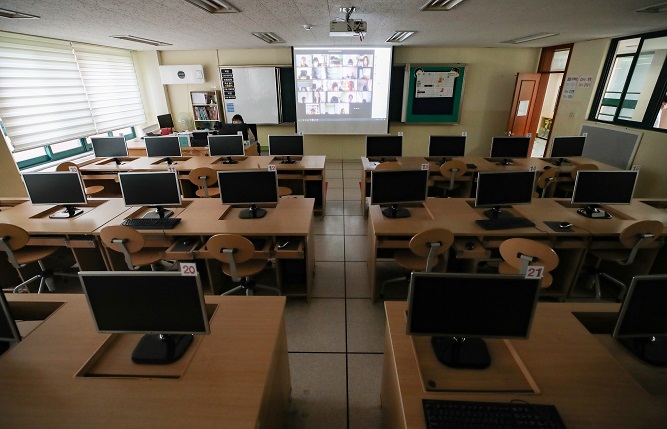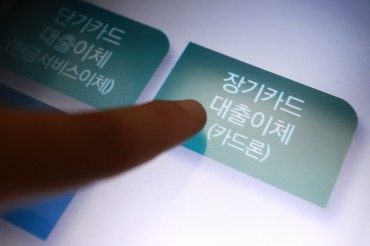SEOUL, Sept. 18 (Korea Bizwire) — In the age of the new coronavirus, digital devices represent a lifeline that helps many stay connected despite social distancing, teleworking and remote learning.
As the new mode of life continues, however, a growing number of people are complaining of fatigue as their lives revolve around their phones and computers, literally 24/7, with endless Zoom meetings, bombarding COVID-19 news and ceaseless social media notifications.
A photographer and blogger, known by her blogging nickname, Dianoma, 30, is one of those who recently joined the “digital detox” movement and set hours every day to break away from her devices to focus on her offline life.
“One morning, I woke up to find out a thousand new messages piled up on my Kakaotalk,” she said, referring to the country’s most-used mobile messenger. “It struck me then; what I considered as communication had turned into a burden.”
It was shortly after she shifted her photography classes online after all her offline classes were canceled due to the virus.
That meant more blogging, more group chats, more notifications and more time habitually browsing through YouTube and Instagram even when her phone stayed quiet.
In May, she spent an average 10 hours a day online.
Dianoma, who asked to go by her nickname, said it took a great toll on her — both physically and mentally. Her wrist started to ache, and she found it increasingly difficult to focus on her work.
“All-out disconnection was not an option as my work is based on social media platforms. I had to find a way to cope with it,” she said.
After deciding to go on a digital detox, she turned off all the notification functions on her social media accounts. From midnight to the next morning, her phone is on flight mode.
“Because everyone has their own work styles and needs, there is no one-size-fits-all method on how to have a detox from the online world,” the photographer said.
For Lee Min-jee, a 31-year-old student, keeping her phone off for two hours a day worked best.
From chatting with friends to checking the news, working out while watching YouTube videos, studying and watching movies, it appeared her life would fail to function properly without a digital connection.
But when she felt such a connection became “essential yet suffocating,” Lee decided to go on a digital detox.
“It turned out life continues just fine even when my phone is off for two hours,” she said.
According to a survey conducted by the Korean Addiction Forum, 44 percent of South Koreans said their use of smartphones rose during the pandemic, with the increased use seen among all age groups.
The survey was conducted on 1,017 adults aged 19 or older from May 20-29 with a margin of error of plus or minus 3.1 percentage points and a 95 percent confidence level.
“Social distancing is a major challenge in terms of mental problems,” said Lee Hae-kuk, professor of psychiatry at the Catholic University of Korea.
“A noncontact society increases the risk of excessive use of digital devices, leading to anxiety, depression and stress.”
Kim Youn-ji, another digital detox practitioner, said it was a “life-changing” decision to voluntarily impose restrictions on her digital device use.
“Whenever my friends say they cannot concentrate on their lives or feel depressed, I suggest, why don’t you try to keep yourself away from the social media world for some time,” Kim said.
Experts warn too much dependence on mobile devices is particularly dangerous to children and adolescents who are more vulnerable to addiction.
According to a government survey conducted on students at the fourth grade of elementary school and first year at middle and high schools, 228,120 were in the risk group showing overdependence on the internet or smartphones, up from 206,102 tallied in 2019.
The poll was conducted online on 1.3 million students at 11,705 schools from June 29 to July 31, according to the Ministry of Gender Equality and Family.
“They are glued to the screen almost the whole day,” said Chung Haeng-eun, 44, a mother of two, referring to her children who stay home after the government ordered all schools in the greater Seoul area to shift to virtual classes late last month.
For Chung, her family’s weekly digital detox day on Sundays — no smartphone, no internet — is a crucial line of defense to keep her children from spending too much time online.
Chung now hopes she could soon spend the detox day breathing some fresh air and going on weekend trips.
“When the tougher social distancing scheme was in place, my daughter was so sad she could not go out and play with her friends,” Chung recalled.
“I would from time to time set up Zoom meetings for her to talk with her friends but how much fun could it be for an elementary school kid?”
South Korea’s new virus cases have been in the triple digits for over a month now. On Thursday, the country reported 153 new cases, raising the total caseload to 22,657.
The number of daily new infections has been slowing down to some extent on the back of tougher social distancing measures, but a rise in cases with unknown infection routes and cluster infections continue to weigh on the virus fight.
Starting Monday, the Seoul metropolitan area was put back under the Level 2 social distancing rules in the three-tier system on par with the nationwide alert level, until Sept. 27.
Under the Level 2 scheme, South Koreans are allowed to maintain most of their daily routines, but outdoor gatherings of more than 100 people are banned. Sports events are allowed without spectators, and indoor meetings of 50 or more people are also prohibited.
Lee, the psychiatrist, said the government should start mulling ways to allow citizens to resume their offline activities while keeping the risk of the virus spreading low.
“The COVID-19 situation will not come to an end all of a sudden, and we can’t just ask people to stay home indefinitely. The government should begin seriously thinking about what is a sustainable way to live our real lives offline in the time of a pandemic,” he said.
(Yonhap)









